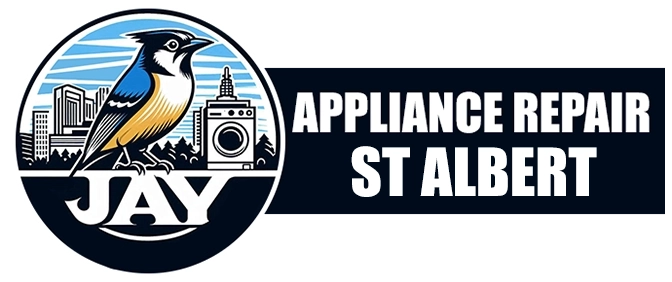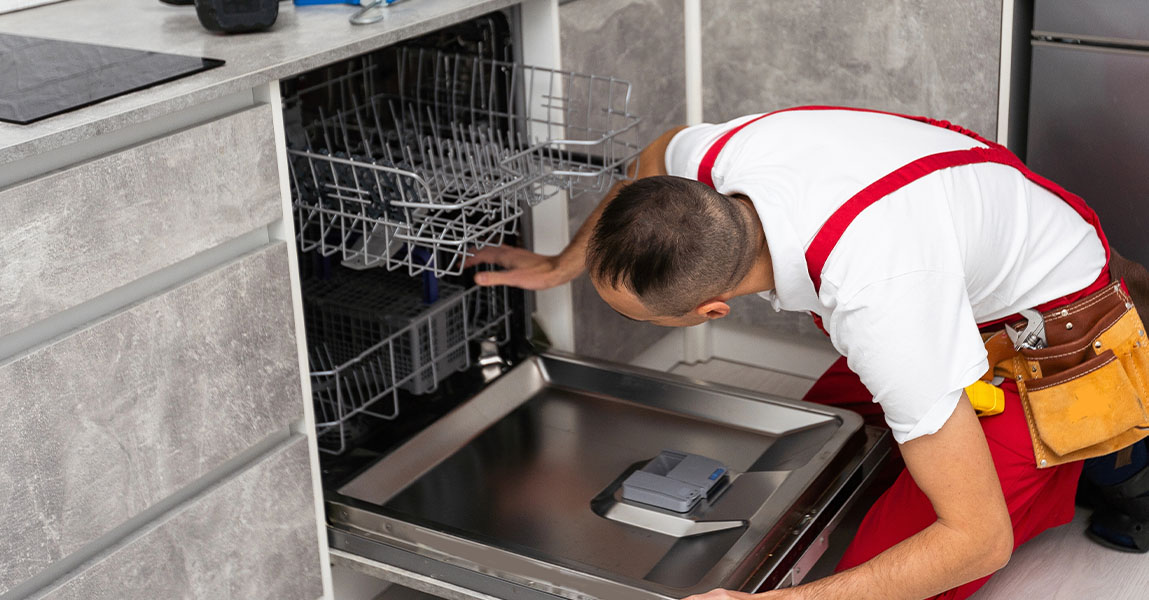When our dishwasher stops mid-cycle, it disrupts the entire routine at home. Instead of clean dishes, we are left with a half-finished load and standing water. This issue often ties back to two culprits: the overfill float or the control board. By understanding how these parts work, we can figure out what is wrong and what to do next.
Understanding the Overfill Float
Inside the dishwasher is a small part called the overfill float. Its role is to sense the water level. When the right amount of water fills the tub, the float rises and signals the machine to stop filling. However, when it gets stuck or damaged, the dishwasher may think it is already full and shut down.
We need to check if the float moves freely up and down. To do this, we can gently lift it with our hand. If it feels jammed or coated in debris, cleaning may solve the problem. Sometimes the float switch underneath fails and cuts power to the cycle. In those cases, it may need replacement. For broader issues tied to leaks or fridge connections, exploring professional fridge repair in St Albert helps ensure proper checks of related water systems.
Control Board Problems
Another cause is the control board, which is like the brain of the dishwasher. It sends signals to every function, from filling and washing to draining and drying. If the control board fails, the dishwasher may stop mid-cycle without warning.
We can notice this issue when lights on the panel flicker or fail to respond. In other cases, the machine may shut down at the same point every time. Unlike the float, testing a control board is harder without tools. We may need to inspect for visible burns or signs of wear. If the board shows damage, professional diagnosis becomes necessary. For quick and trusted help, we can always turn to appliance repair services St Albert to confirm whether repair or replacement is best.
Signs the Overfill Float Is at Fault
We often spot float issues by the way the dishwasher behaves. For example, the tub may not fill with enough water before the cycle stops. In other cases, we might see the float stuck in one position, not moving as the machine runs. Sometimes the float sends false signals and shuts the machine down even though water levels are normal.
To check further, we can listen for clicking when the float moves. A working float switch makes a soft click as it changes position. If we hear nothing or if the dishwasher shuts down without proper draining, it usually points to a float or switch fault. Acting quickly avoids bigger water problems in the kitchen.
Symptoms of a Bad Control Board
When the control board is to blame, the dishwasher shows different signs. The cycle may freeze in the same stage every time, such as during the wash or rinse. We may also notice strange behavior, like the pump running too long or buttons not responding.
In some cases, the dishwasher stops and displays error codes. While each model is different, these codes often suggest that the brain of the machine is not giving the right signals. Resetting the power sometimes helps, but if the problem keeps returning, the board likely needs repair or replacement. This is not something most of us can fix at home without skill.
How to Troubleshoot Before Repair
Before we call for service, we can try a few checks. First, we unplug the dishwasher or turn off its breaker for five minutes to reset the system. Sometimes this clears out temporary glitches. Next, we check the overfill float by moving it up and down to ensure it is not stuck.
We can also inspect the wiring around the float switch for signs of corrosion or loose connections. If the float and switch seem fine, but the problem repeats, then the control board becomes the main suspect. At this point, it may be time to reach out for service. We can easily contact JAY Appliances to schedule a skilled technician who will confirm the root cause and handle repairs safely.
Preventing Future Mid-Cycle Stops
Once repairs are complete, we want to avoid the same trouble again. To prevent float issues, we should keep the bottom of the dishwasher clean and clear of food debris that can jam the float. Checking it monthly helps ensure smooth movement.
For the control board, prevention is about protecting the electrical system. We can use a surge protector to guard against power spikes. It is also helpful to avoid slamming the dishwasher door, since vibrations can damage sensitive wiring over time. Simple steps like these make the dishwasher last longer and run more reliably.
FAQ
Why does my dishwasher stop mid-cycle with water inside?
This usually happens when the float switch misreads water levels or the control board shuts off power too early. Both issues prevent proper draining.
Can I test the float switch myself?
Yes, by moving the float up and down and listening for a click. If it does not click or feels jammed, it may be faulty.
What does a failing control board look like?
It may show burn marks, give error codes, or cause cycles to stop at the same stage each time.
Should I replace the float switch or the control board first?
It is easier and cheaper to start with the float switch since it is a smaller repair. If that does not solve it, the board may be at fault.
Is it safe to run the dishwasher if it stops mid-cycle?
No, because it may leave standing water and risk leaks. It is better to turn it off and have it checked before running it again.

